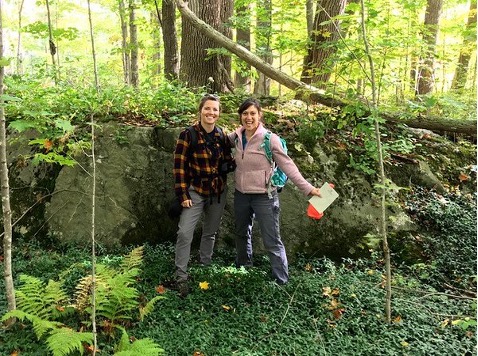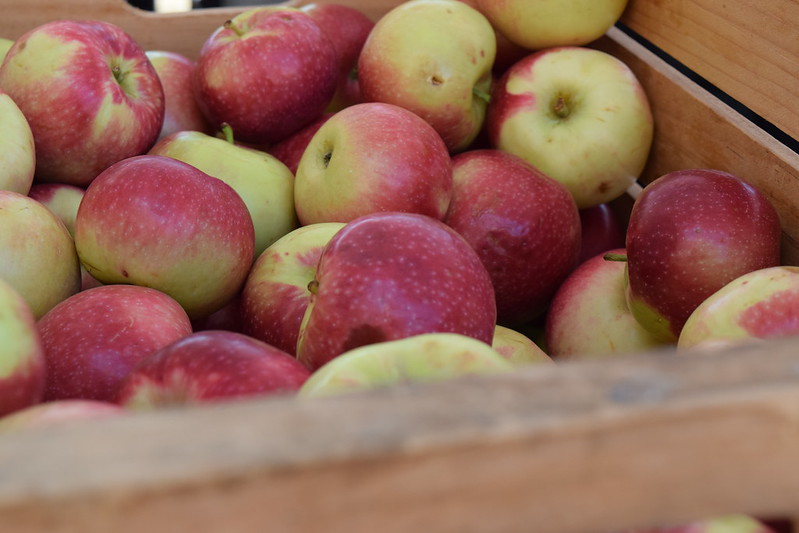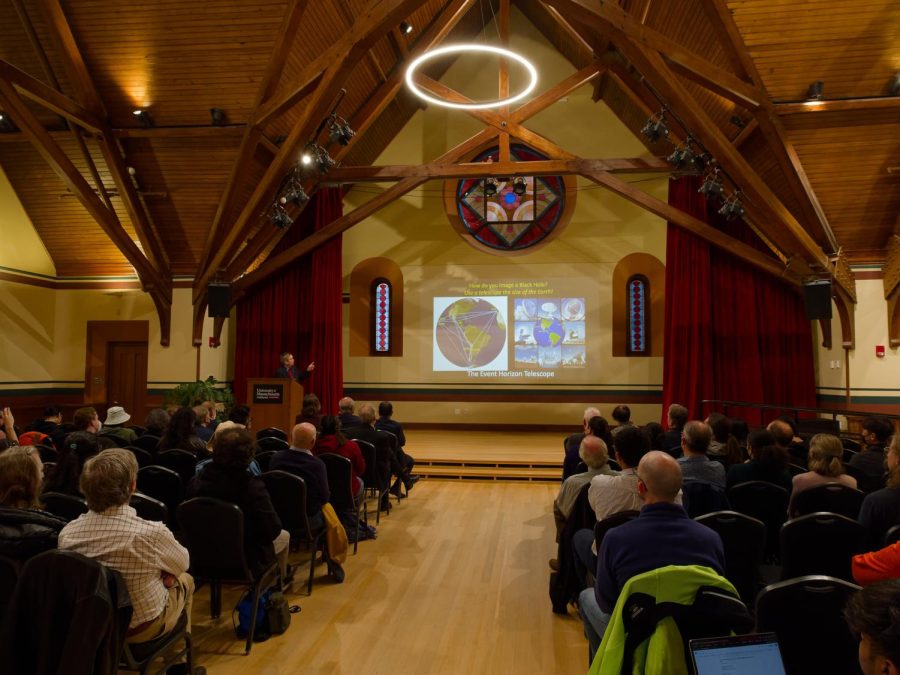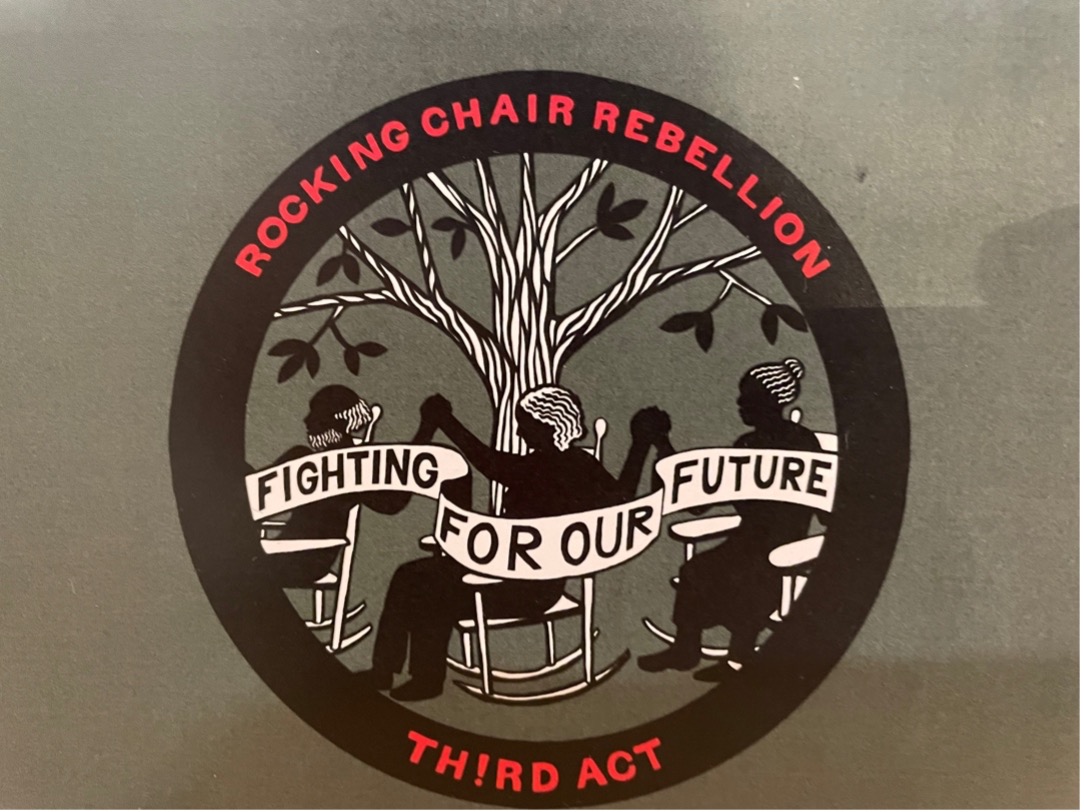To commemorate Earth Day, Daily Collegian reporters spoke with a handful of University of Massachusetts alumni, professors and graduate students who are working in fields relating to sustainability and conservation.
Mackenzie Greer, ‘09
At UMass: Dual Master’s Degree in Landscape Architecture and Regional Planning
Currently: Director of Public Programs, Berkshire Natural Resources Council
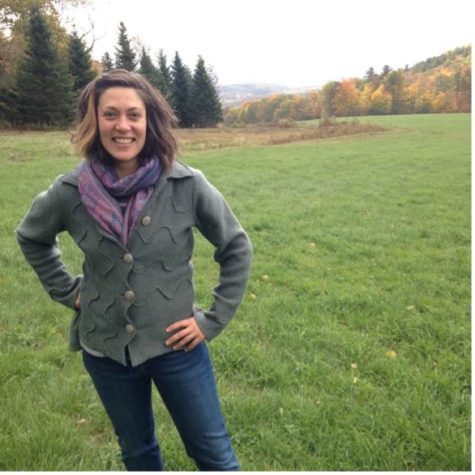
“To me, it feels really important to be doing good work in the community that I love. It’s creating something that is bringing benefit to the folks around me and to my neighbors [and] to my children.”
Mackenzie Greer believes in the natural solace her work provides communities and in the values instilled in places through green community development. As director of public programs at Berkshire Natural Resources Council, Greer focuses on land acquisition — deed research, communicating with landowners, building community relationships and investigating sites. The most important part of her job? Conservation.
“How do we make sure that there’s abundant conservation land in our area? Almost 40 percent of our land is conserved. How do we make sure that it benefits our local communities?” she said. “The more relevant we can make these natural resources to the communities at large, the greater stewardship potential we have, the better the future potential of that land is.”
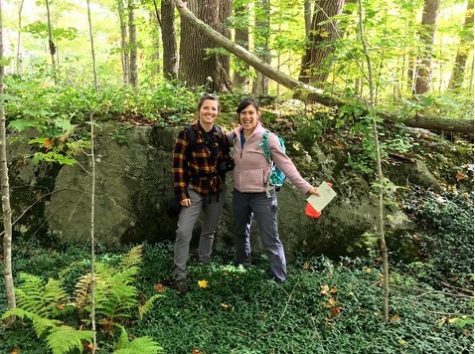
Greer’s career wasn’t always defined by land. Before joining the LARP program at UMass, she returned to the place she grew up to work on a downtown revitalization project, converting a 100-year-old theater to an art supply store. Despite her undergraduate degree in studio art, this project defined her interest in a different field: community development. At the same time, her interest in “placemaking” exposed her to landscape architecture. She felt that transitioning to UMass’ program would be the right start in exploring this new focus.
Intertwined with Greer’s professional trajectory is her passion for historic preservation. While at UMass, she worked at both the Agricola Corporation in Chicopee, a historic preservation consultant, and the Library of American Landscape History. She considers her early work in tracing histories of title ownership a bridge to her current position, where she studies changes in the structure of land boundaries over time, determines land significance and plans “from a sense of space” in an environmental context.
She describes her convergence of interests as “dancing between worlds.” Helping her with that dance was her UMass statistics professor Henry Renski, his advice still fresh in her mind: “‘You can do almost anything with a planning degree and bring great value to it,’” she recalled him saying.
After UMass, and a hiatus from western Massachusetts, Greer “kept being drawn back here.”
She and her husband returned to the Berkshires, ready to fully invest in an environment and community they care dearly about. Greer worked first as an entry-level planner for the Berkshire Regional Planning Agency, then transitioned to a city planner position in North Adams. She knew, however, that she wanted to again shift direction away from municipal planning and towards project implementation.
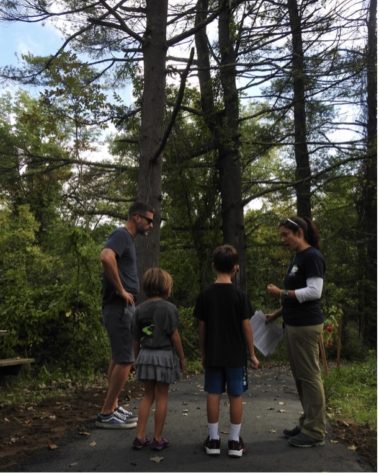
“It was just this kind of sea change for me, having kids and really thinking about, where do I want my impact?” she reflected. “What kind of work can I engage in that really has deep meaning for me, and will have a lasting effect for my children?” With intertwining personal and work lives, Greer’s own passion was important for her to consider.
She narrowed in on Berkshire Natural Resources Council.
“That’s where it sort of began to tie everything together for me,” she recalled. Focusing on how, where and for whom she was creating public access was incredibly valuable to her — whether that’s building trail projects and parking lots or implementing signage.
Even without an environmental background, she found herself in BNRC’s entry-level opening, using her experiences with grant proposals and funding and project development to get her foot in the door. She has been at BNRC ever since, ensuring land accessibility, grappling with land acknowledgements and learning about “the importance of the Berkshires in a much bigger landscape of conductivity and resiliency.” Understanding how to acknowledge “the true and more complete history of the place that we live and this land that we open to the public” has led Greer to analyze who has access to properties. She hopes and suspects that this work will be ongoing, through projects similar to one of her recent, meaningful completions.
Greer stepped into the Parson’s Marsh project in Lenox, when it was halfway completed and organized a team to design, fund and build a boardwalk and trail system with physical access into the marsh that was navigable for individuals in wheelchairs and other mobility devices. Opening that project and witnessing hundreds of people visiting the trail was unlike anything she had experienced.
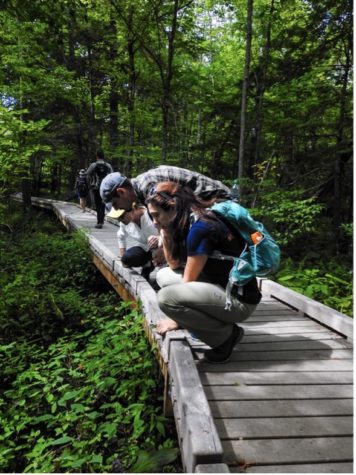
“We heard that [the community needed this project] a number of times from folks… how important nature was in their life and that it had been kind of taken away from them [due to injuries, age, infirmity] and this gave it back. That to me was just so important and felt so right,” she said.
“It was just so amazing to have helped, even [in] a small way, create this experience that allowed people to really do something that felt fulfilling to them and help them connect with a part of themselves and with nature.”
That is at the center of Greer’s philosophy. While her own positive childhood memories of being outdoors in the Berkshires inform her professional work, her understanding of green infrastructure and the interconnection of these systems aids her equally. Connecting others with the sense of comfort and healing she feels from nature, Greer believes, ensures that her actions have “an impact variable far down the line.”
Gino Giumarro, ‘95
At UMass: B.S. in Wildlife Biology
Currently: Business Unit Director at Power Engineers
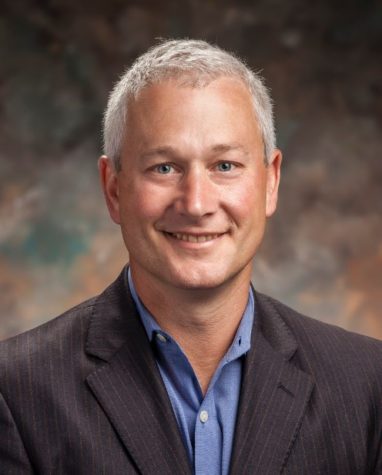
As an environmental consultant, Gino Giumarro uses his UMass degree in wildlife biology on a regular basis. A transfer student who attended his last two and a half years of college at UMass, Giumarro graduated in 1995 and continued his studies on the graduate level at the University of Vermont, specializing in environmental consulting.
Environmental consulting agencies analyze the environmental impacts of public and private industries by conducting thorough scientific analyses. Through experience in environmental law and regulations, environmental consultants direct industries and organizations away from possible violations and fines to ensure that the safety of the natural world is a priority. While discussing his profession, Giumarro provided a basic example of environmental consulting.
“At the very simplest it could be, you want to build a house. In order to build that house lawfully, you need to ensure that you meet a variety of conditions. Are there no wetlands? Are there no rare, threatened or endangered species? These are basic things that everyone goes through day to day, and it requires somebody who can go in without bias, do the science and meet the rules,” he said.
An experience that jump-started Giumarro’s interest as an environmental consultant was interning at Bartholomew’s Cobble, an agricultural reserve in Ashley Falls, where he worked with the Trustees of Reservations, a non-profit dedicated to the preservation of natural and historic landmarks in Massachusetts. There, Giumarro dealt with numerous environmental conflicts.
“There were everything from conflicts between adjacent farmers [to] the impacts of invasive species on that particular property,” Giumarro said. “It was that stuff that happened outside of class that really got my mind thinking about where I wanted to go with my career. And I found those problems to be a challenge.”
Following his college career, Giumarro was involved in many environmental conservation projects initially with programs pertaining to the Department of Defense. Traveling to different military installations around the world, Giumarro helped to write integrated natural resource management plans to ensure that military reservations were effectively maintaining and planning their projects in accordance with the U.S. Fish and Wildlife Service.
Giumarro described the influence of the Sikes Act, “which required military installations in the Department of Defense to act in the best interest of natural resources” on his work. He recalls that it was at the department where he was able to offer a lot to that work through reflecting back to his time at UMass.
Giumarro continued his environmental work, transitioning to an agency where he analyzed the impact that various renewable energy practices had on the natural environment.
“I spent a bunch of time looking at the interface of how wind turbines might impact birds and bats in the natural landscape.” Giumarro explained. “We were taking marine radar units for instance and putting them up on mountaintops to look at the migration of birds and bats at night. We tracked those targets and started to get estimates of what the strike rate could potentially be of birds and bats as they are migrating at night through the landscape.”
From Texas to Minnesota, Giumarro found himself working on oil and natural gas sites, helping to evaluate the optimal route for pipelines that are in accordance with environmental law. Giumarro also worked on the Mississippi Canyon 20 platform oil spill in the Gulf of Mexico, that is estimated to have leaked 140,000,000 gallons of oil into the surrounding body of water.
Giumarro recounted his work on the incident: “I spent about 18 months working down there as a natural resource advisor helping to advise clean-up crews on ways to not make their clean up worse on the environment. That was an incredibly eye-opening thing for me.”
It was the hands-on lab work conducted at UMass that allowed Giumarro a leg up on his peers in the job market, but he explains that he was missing “a focus on what careers wildlife ecologists have out there.” He wished he had taken a course in environmental consulting or the business of science more broadly, feeling that would have been useful for building fundamentals.
In other consulting agencies, Giumarro has had to analyze the effect that certain projects have had on low-income communities as well as various Native American communities who believed that their American and Indigenous rights were being infringed upon. These projects prompted the question of how sustainable current non-renewable energy gathering methods would be in the future.
“There wasn’t a whole lot of focus on how to evaluate energy, I think we thought we had it all kind of figured out, we were going to burn coal and oil, and that was working out great. There would be plenty of it and why look further?” Giumarro said.
“It became definitely obvious that this is not something that is going to be sustainable for us to do forever, but it has its place within today’s energy picture. Despite how much I would love to live in a renewable only environment, I recognize that it’s a necessary part of the picture now until we create a sustainable future.”
Alicia Coleman, ‘21/22
Currently: Ph.D. Student in Regional Planning at UMass (within LARP)

Alicia Coleman has been in college for 10 years. From an undergraduate degree in psychology and sociology, to a master’s degree in environmental studies, Coleman is now in the fifth year of her doctorate in regional planning at UMass, studying street trees and their impact on communities.
Before reaching this point, she explored many options related to the drive she felt toward social work. “That translated into sustainability-oriented social work, where I was more interested in the built environment and how our places actually affect us as people,” she said.
Geography, environmental studies and planning programs were all of interest to her as professions. “During my master’s project [at the University of Pennsylvania], I remember citing Robert Ryan, who would then turn to be one of my dissertation chairs and one of my co-chairs [at UMass]. So, when I started looking at different programs more locally, I noticed his name on the faculty list for LARP,” she recalled.
Many conversations later, Coleman ended up at UMass.
While she now views the road to her studies as unplanned and “serendipitous,” Coleman ties her interest in the environment back to first-hand experiences and childhood memories that fostered a care for the outdoors. At home in suburban New Jersey, she remembers going to the beach with her family, watching lightning storms by a river in the summertime with her mom and watching her favorite space filled with trees behind her grandparents’ house get torn down and replaced by houses.
“Having the proximity and support by our caretakers to just be outside and to also just be observant of what was happening around us…was, I think, critical,” she said.
At the time of her undergraduate studies, when she was taking introductory environmental science classes, she was living behind an Ocean Spray cranberry bog in New Jersey.
“[I] saw some of the farmers spraying phragmites with an herbicide to kill them off. And at that time, I was learning about the invasive species and invasive pest management,” she said.
Coleman knew that her and her neighbors’ proximity to the bog was negatively impacting their lives — in particular their drinking water — and recalled those “in-my-own-backyard connections” to be instrumental in her piqued interest.
Coleman believes her time living near the Pine Barrens, a major ecological landscape in New Jersey, “was a natural inspiration while learning about all of these concepts and then seeing people, for purposes of their own production, degrade beyond these natural habitats.” Her ensuing decision to go to graduate school came from the realization that if she wanted to go into an environmental field, she would have to not only expand her liberal arts education but receive training in environmental curricula.
While all of her projects have impacted how she does her work now, her first study funded through UMass, with the Massachusetts Department of Transportation, was instrumental. It focused on their “complete streets policies” — intentional redesigns and reconstruction of streets to make them safer for pedestrians — and how planting trees on roads has been an important safety intervention to improve pedestrians’ safety.
“Trees themselves are kind of the biggest piece of vegetation intervention as part of these streetscape redesign projects. So they became an easy organism to study [and] they’re also the most prominent form of living infrastructure that you can see in a city,” she said, explaining her specific interest in trees.
That first project introduced her to a world exclusively focused on the psychological perceptions and social impacts of trees, and people’s capacity to take care of them.
“My dissertation focuses on street trees, specifically residents’ perspectives of new street trees, or street-facing tree plantings that could be happening in their community,” she said. In her doctoral studies, she has found interest in urban places. Cities are, she believes, integral to the regional economy of New England, though she noted the concept is matched with “this legacy of postindustrial places that hit their peak a couple hundred years ago, and now are still economically viable, but are still struggling.”
“It’s just a completely new, interesting type of landscape that’s unique to this region, and seemed worthwhile to study.”
Anastasia Ivanova, ‘20
At UMass: M.S. in Environmental Conservation
Currently: Enrolled in the Physician Assistant Program at Westfield State University
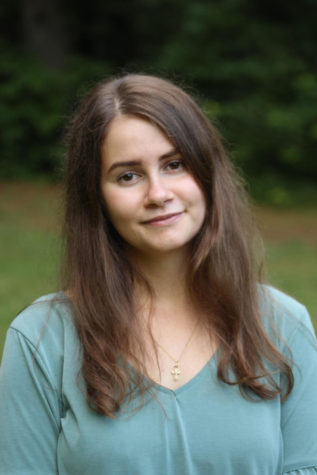
“I’d say that environmental conservation extends into every single discipline and every single branch that you can think of. It’s just something that is a foundation.”
Anastasia Ivanova’s first real integration into the field of environmental conservation was when she completed her master’s degree and defended her thesis in December 2020. Ivanova studied psychology during her time as an undergraduate, though is a firm believer in the multidisciplinary nature with which she approaches her work.
While her major was environmental conservation, Ivanova’s thesis involved a great deal of public health research that examined the interconnected relationship between health impacts and climate change within communities. In her thesis, Ivanova examined ecosystem services — services that are provided by the natural world such as food, water, or flood and erosion mitigation. Along with her advisor, Professor Timothy Randhir of the UMass department of environmental conservation, Ivanova studied the effectiveness of ecosystem services in mitigating climate change in urban and rural communities. By analyzing the role of urban forests and cover crops in certain landscapes, she worked to create tools that communities can use to assess the effects of climate change in their community.
“We are creating these kinds of tools, spatial tools which enable communities to go ahead and analyze how at-risk their community is and the kind of ecosystem services that are natural in their community and where we can do some work,” Ivanova explained. “So creating a tool like that is really incredible because once again, it is not just going to be used by people in environmental science.”
Ivanova realizes that this may not seem like a traditional introduction into the field of environmental conservation, but she became interested in this work during her experience in the health industry, after working on an ambulance as an undergraduate.
“You might have a patient a year where the climate conditions are different, it is hot, and suddenly you have a high population of patients who have heat stress or heat stroke and that puts a lot of pressure on the hospitals and puts a lot of pressure on the resources because they weren’t anticipating that,” she said.
Ivanova’s studies have proven to be intersectional, involving many different branches of science to provide thorough analyses of the role that environmental conservation plays in many different aspects of life. The interwoven relationship between health and environmental conservation is something that Ivanova emphasizes and describes as instrumental in her studies in public health.
“My experience working in the health industry made me realize just how much of a background you really needed in understanding how the public health sector connects with the environment,” she said. “You cannot fully understand public health without understanding that foundation.”
Ivanova pointed to the importance of the field of environmental conservation in providing a strong foundation and creating relations between other fields of study.
“If you don’t know what it is that you want to do, I would say that this is a really good place,” Ivanova said. “The environment connects to so many disciplines. But once you start really exploring these elements, you will be able to find your niche, and essentially this is what helped me recognize and find myself.”
Theodore “Theo” Eisenman
Currently: Assistant Professor of Landscape Architecture at UMass

“My career path has been very nonlinear. It’s been circuitous,” said Theo Eisenman, as he reflected on his time spent both domestically and internationally, in school and out of school, in green infrastructure and outside of the field.
Over a span of years, with roots in his hometown of suburban Maryland, Eisenman found himself exploring an undergraduate degree in journalism, two years with the Peace Corps in Senegal, and a job at the Environmental Protection Agency. His journey in environmentalism began only after his time at the EPA, when he realized he wanted to continue his education.
His childhood experiences — whether as a boy scout, catching tadpoles in his pond or spending summers by a lake in Sweden with his family — informed his love for the outdoors. Though how they connect to his current work he believes ranges in the subconscious.
“Some part of me understood that this [environmentalism] was an important issue,” he said.
Eisenman is certain, however, that he loves cities as much as the natural world — a cross section where his research in urban greening focuses. Living in many international spaces, from Stockholm, to France, to Washington, D.C., he has seen “what livable cities look and feel like.”
“I think that gave me a real interest in urbanism [and] cities. And, you know, the role that vegetation and planting can play in creating more livable, more sustainable cities. So, it’s kind of like the marriage of the landscape stuff with my increasing interest in cities and urbanism,” he said.
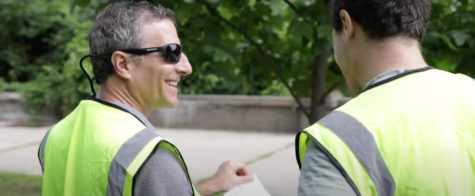
Having obtained his dual master’s degree at Cornell University and his Ph.D. at the University of Pennsylvania, Eisenman straddles the landscape architecture and regional planning disciplines at UMass. He is mindful of the high rate of urbanization that will put a majority of the world in cities by the end of the century.
Cities, he believes, are the future, though how to create livable, sustainable cities is fundamental to that future.
“We need to be really clear about the actual work that vegetation can do,” he said.
“We have all kinds of psychological and social benefits from parks, and plants in the presence of our lives… [but] I can point to papers showing that urban trees are not going to do much for carbon sequestration and climate change,” he said, referencing his own research. “They can help adapt to climate change through cooling, but we’re not going to fundamentally mitigate climate change.”
He noted these “purported benefits” that circulate the public that are not well supported by science.
Eisenman’s central work in equity and being in western Massachusetts has allowed him to investigate the discourse occurring in the practice and research of green infrastructure. Post-industrial towns, like many in Massachusetts, struggle socially and economically, and he wants to change the reality that the conversation often “[focuses] on large cities [like] New York, Los Angeles, Chicago, Boston…” A paper he recently published illustrates that the vast majority of citizens live in mid-to-small-sized cities, and so focusing on the largest cities is “not representative of a myriad of municipalities nationwide.”
Social infrastructure — the systems and people that determine how vegetation is cared for within cities and how programs are implemented — according to Eisenman, has important implications for urban greening and green infrastructure.
“We need to be spending more resources on the social infrastructure, the people that are ultimately responsible for implementing and managing green infrastructure, in addition to the actual green infrastructure,” he said.

“This taps directly into equity issues. If we really want an equitable approach to green infrastructure,” he proposed, “we need to invest some meaningful portion of those resources, those dollars into the social infrastructure of these communities. It’s not enough, just to invest in ‘green infrastructure.’”
Implementing that approach via social infrastructure investment correlates directly to Eisenman’s interest in governance. “Who’s managing this green infrastructure? How is it being funded? And which actor networks?” are all questions instrumental in understanding the imminent and historical underlying systems at play in urban greening, he said.
“Ultimately, this is all about how we should be designing urban landscapes,” he said. “As designers and planners…we actually have to do something on the ground, we can’t just stand back and study it. We have to make a mark.”
Ella Adams can be reached at [email protected]. Follow her on Twitter @ella_adams15.
Jack Underhill can be reached at [email protected]. Follow him on Twitter @JackUnderhill16.

